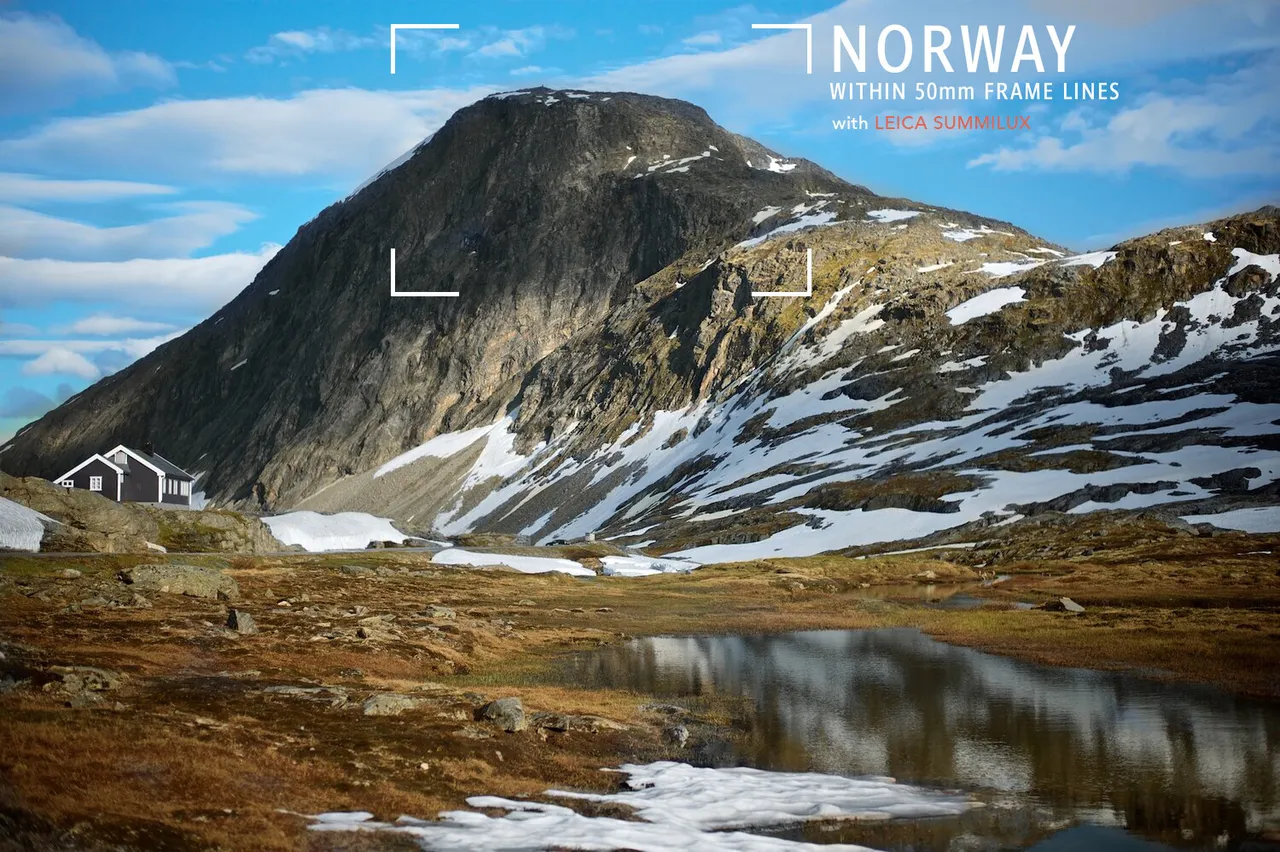
In this article, I would continue to discuss the use of 50mm lens in landscape travel photography. I have taken out from my recent article that I wrote for International Leica Society (LHSA).
Norway’s landscape is famous for giant fjords, rows of mountains, and vast tundra wilderness. In the past, I would always use my 28mm Elmarit to capture landscapes, being satisfied with the fact that I could capture everything in one frame. But this changed after my trip to Norway capturing the landscape using a 50mm lens. There are many lessons I learnt during the process but in this article I will highlight the two most important: Essence and Unique-ify.
In the beginning, I had difficulty fitting the landscape into my 50mm frame line. Naturally when I saw a grand landscape I wanted to capture all of it with the hope that it would show the grandeur of scale of the landscape. However, using the 50mm forced me to think and find the core essence of the landscape. What is it that makes this particular landscape special or grand? What is it that I want my audience to feel?
1. Finding the essence.
Often I found that there is some particular spot or composition within the whole landscape that gives me the sentimental feeling about the whole. For example, see the picture taken in Djupvasshytta in the early morning (picture below). Although the season was summer, it was a cold morning and the warm sunlight had just started to hit the surface of the mountain. The moment was quiet and the mountain felt calm. I used the 50mm frame line of my Leica M rangefinder to look around the landscape, and found the composition that somehow also represented the intimate experience of being in that place at that time. The picture shows that I am standing close to the wooden hut and seeing bits of warm morning light sparkling around the edges of the grasses. A bit of icy water touches the mountain in the background.
Compared with the image at the beginning of this article, which I took at the same location; the image below giving more personal feeling.
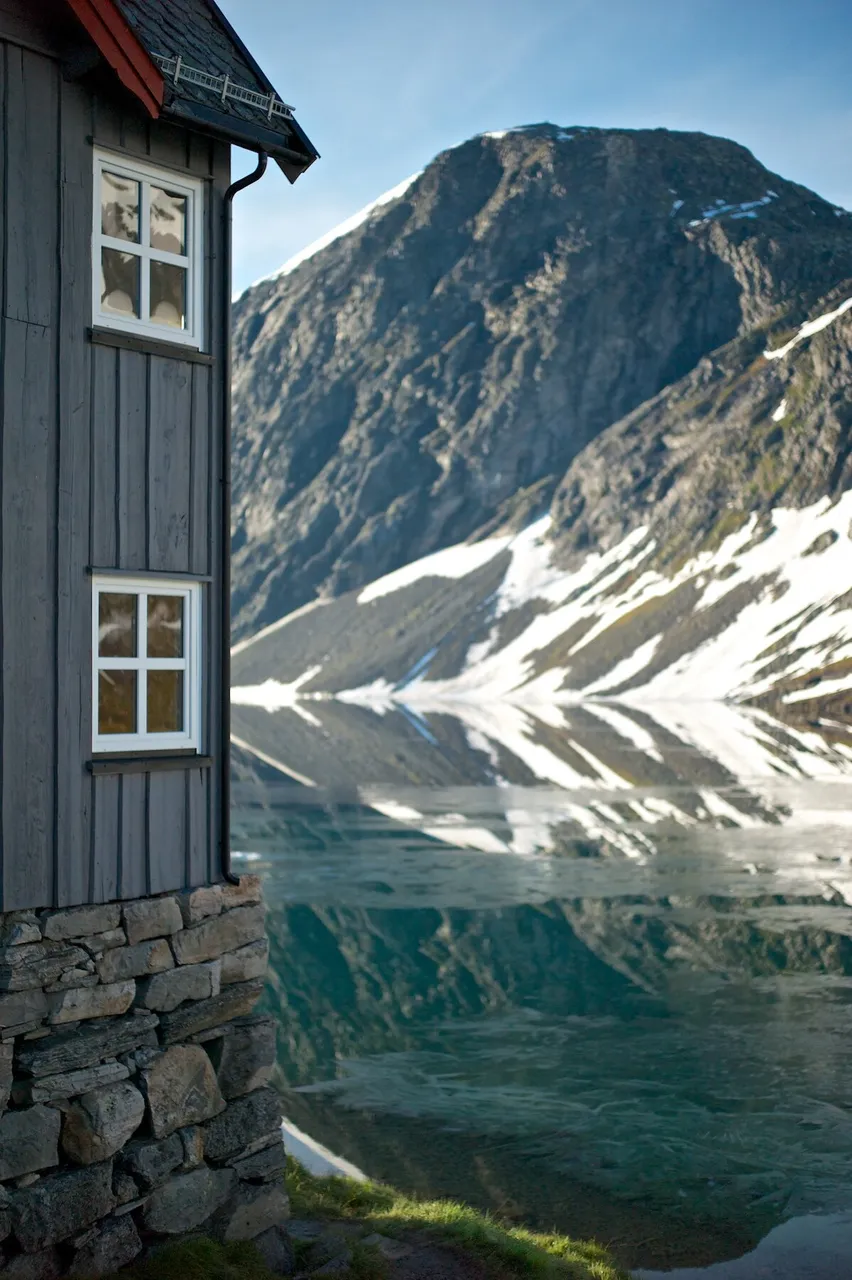
.
2. Unique-ify the landscape
The second important advantage that I found using 50mm in landscape photography is that it allows me to “unique-ify” that landscape, setting it apart from other pictures taken at the same place. In the example of the image on the below-right, I was trying to capture the beautiful fjords and the rows of fishermen’s cabins with plants growing on their roofs. In the past I would use my wide angle lens and capture all of it. But since I chose to fit this within the 50mm frame line, I now have to walk around and find the point of view that somehow captures the essence of both picture elements. I found an interesting POV where somehow the fishermen’s cabins are “watching” the magnificent fjords from a distance. Certainly this gives unique identity to the picture: compare this with the image above which shows the whole thing.
"...a 50mm view helps us find the essence of a landscape."
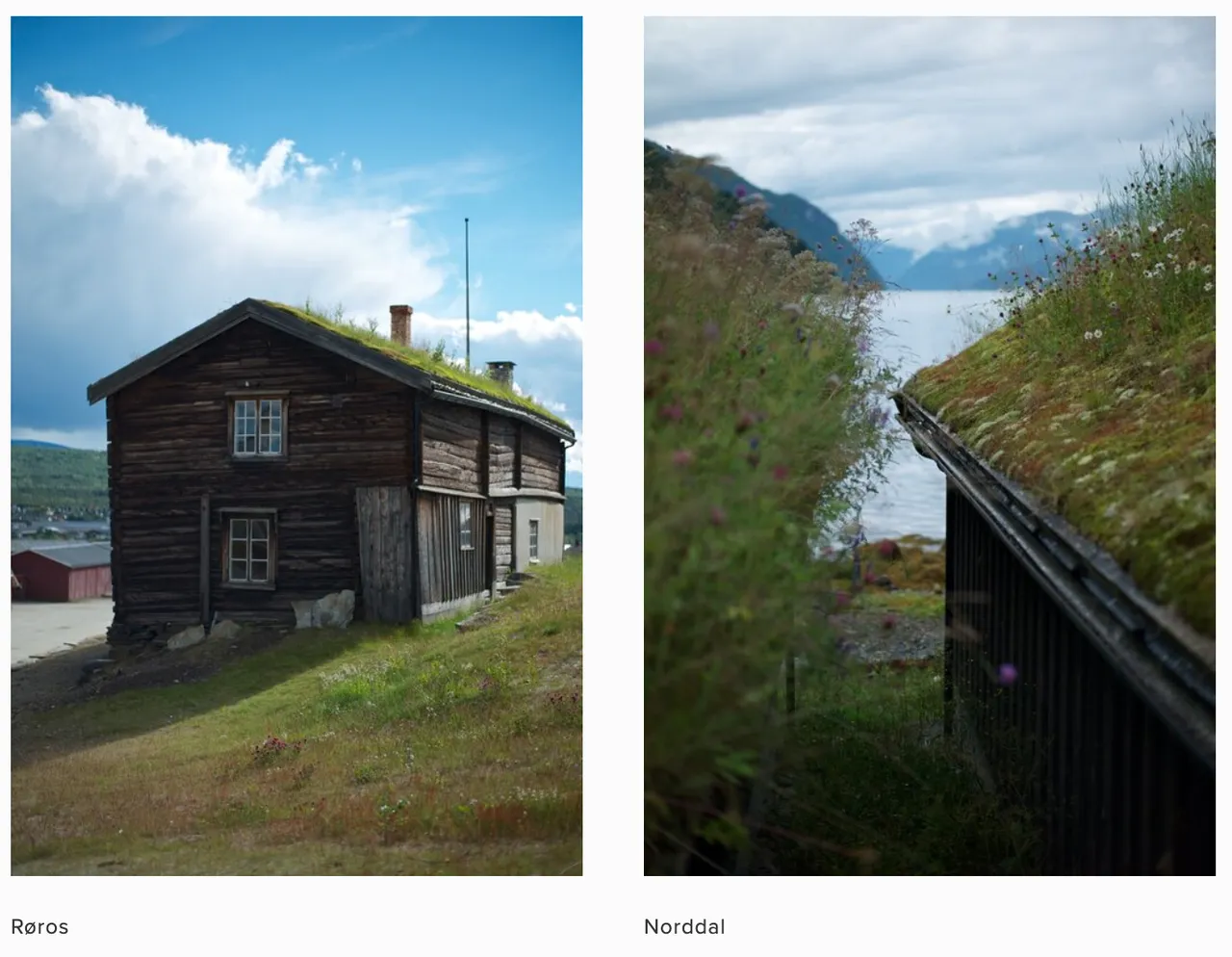
.
3. Frameline for the naked eye
Since a 50mm fame line is very similar to the human eye’s focus angle, always using the 50mm fame lines somehow trained my eye and allowed me to recognize good composition without looking through the camera viewfinder all the time. This is critical when one is a traveling photographer and always coming upon new things. This is especially true with a Leica rangefinder camera, where the viewfinder image is a direct view of the scene. It is not a view which has been distorted through the lens, and more closely approximates what the naked eye sees.
To be able to previsualize a great potential composition with the naked eye is crucial; it is like having a 50mm fame line embedded in one’s eye.
The three pictures on the right are a few of those com- positions that I spotted without checking them with the viewfinder. These images mostly required having a large or close object as “guidance” to estimate the 50mm frame line with the naked eye.

Nigardsbreen Glacier
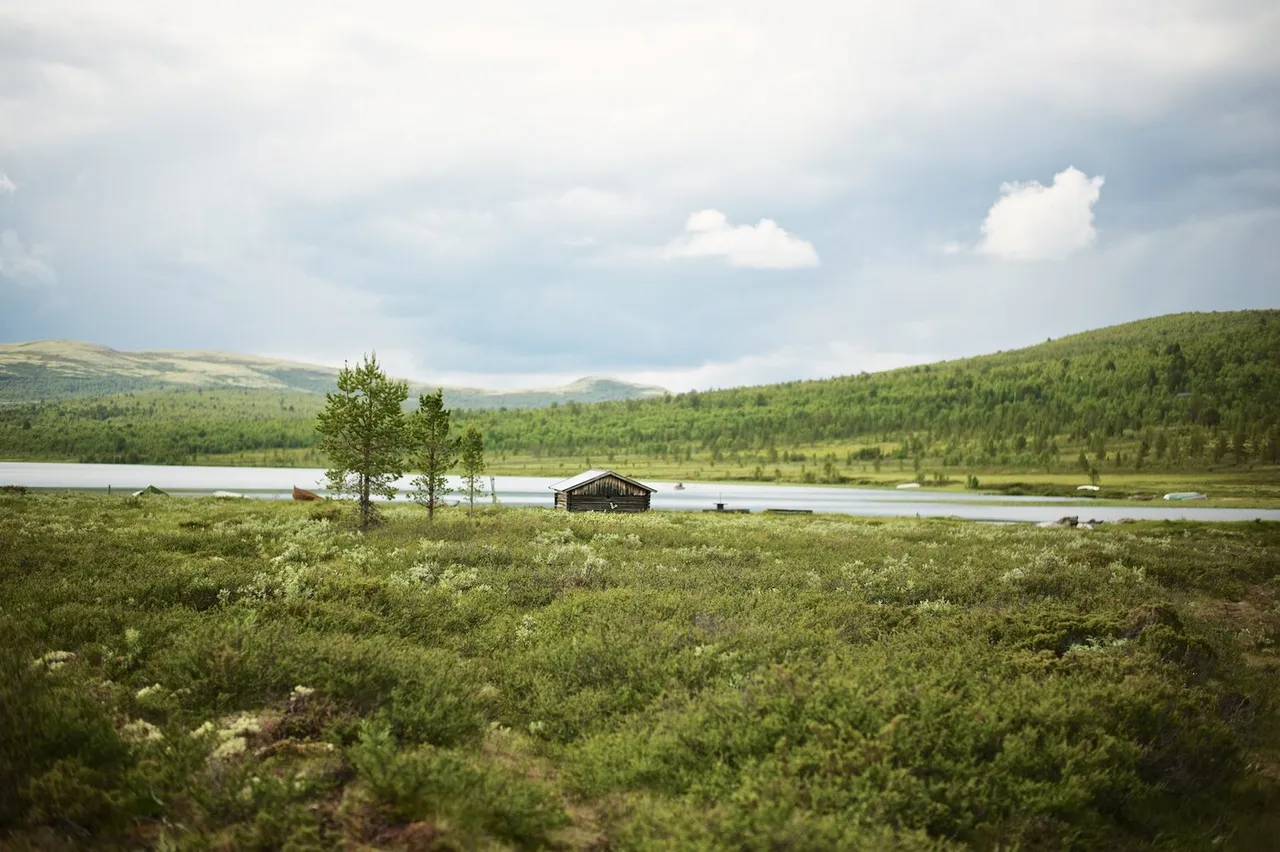
Haustsjøen
.
4. Being "wide angle"
If correctly composed, 50mm is also able to give the impression of being a “wide angle” lens. In the examples above, one can “remove” the impression of being restricted to 50mm if one can show far distance or more picture elements. I think the key here is to find picture elements that will give such an impression: such as roads, layers of mountains, or bodies of water.
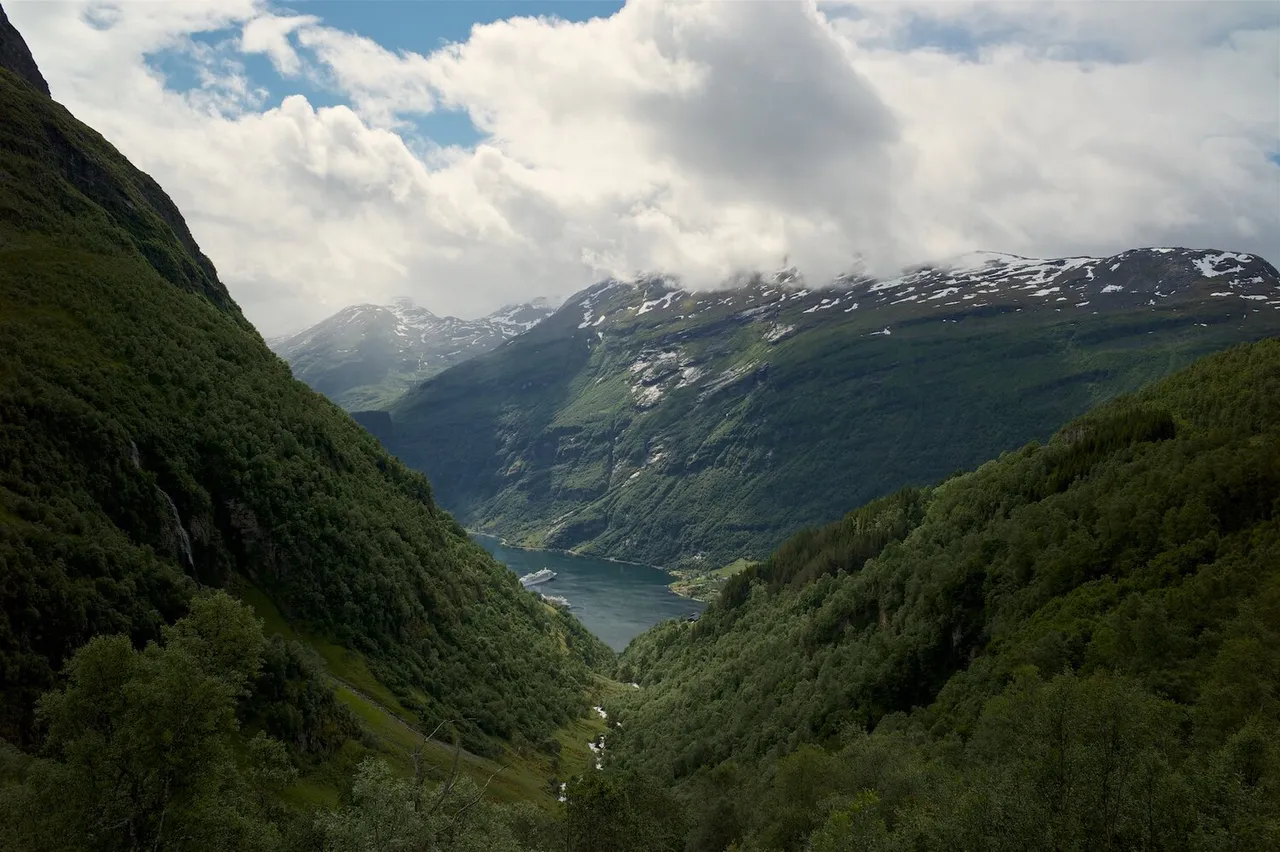
Geiranger

Skare
.
5.Consistency
The other good thing about sticking to one focal length all the time is that it creates consistency among the work that I produce. This will eventually lead to the creation of an identity for my work. This I suppose also applies to other lenses such as wide angles or teles; if you stick with one all the time, then eventually you will master that focal length. When I chose to go with the 50mm, I went through all kinds of challenges and had to try to find solutions for these. In the process this led me to understand more about the lens’ advantages and disadvantages which will ultimately make me the master of that focal length.
"...sticking to one focal length...creates consistency..."
.
Conclusion
A 50mm lenses have a viewing angle that is very close to that of the naked eye. Thus it produces pictures that are easy to look at and that somehow we are all familiar with. The limit is that it also forces us to re-look and re-think to find the essence of a landscape through better composition. That in turn will lead us to produce more personalised photographs.
As a matter fact, most of the compact cameras and mobile phones are equipped with wide-angle lens; thus, having a narrower lens such as 50mm will help to set your photograph apart from the rest.
I am not saying that we all have to use a 50mm to capture landscapes. There are needs and times where we have to show the whole thing and need wide angle lenses: think commercial assignments or client needs.
What I am trying to describe in this article is that a 50mm view helps us to find the essence of a landscape. Why 50mm? Will 90mm also work? I tried this with tele lenses and what I found is that lenses with a narrower field of view than 50mm produce images with compressed distances that look different from what our naked eye normally sees. This can be a good or bad thing, though.
I am aware that at the end, everyone might have different needs and circumtances which you lead you to prefere using other than 50mm focal length. I would love to hear your story!
I am currently working on Monochrome Fine Art Prints projects, and they are available at the following:
Fine Art Chromogenic Catalogue & Print: https://juliusyls.com/fineartprints/
Printed on Fine Metal: https://displate.com/juliusyls/blacknwhite?art=5bf904e078520
Tshirt prints: https://j50.threadless.com/collections/travel-in-monochrome/
Visit my STUDIO & GALLERY in Metaverse: https://spatial.io/rooms/61b846ebebd43a0001ee0b66?share=4759883995019245807